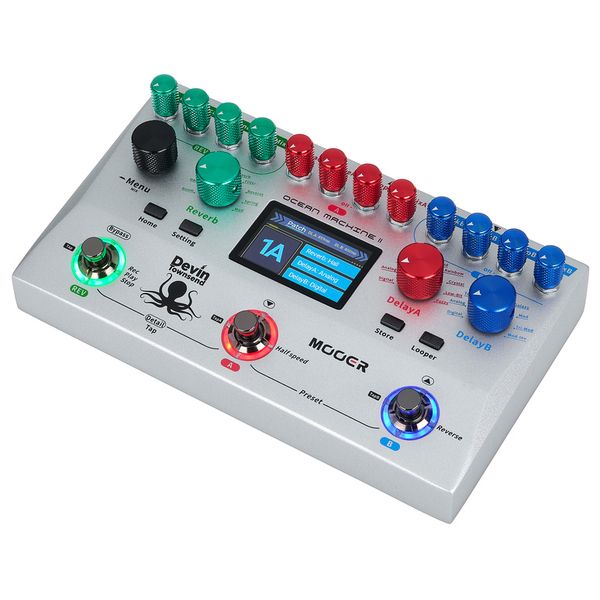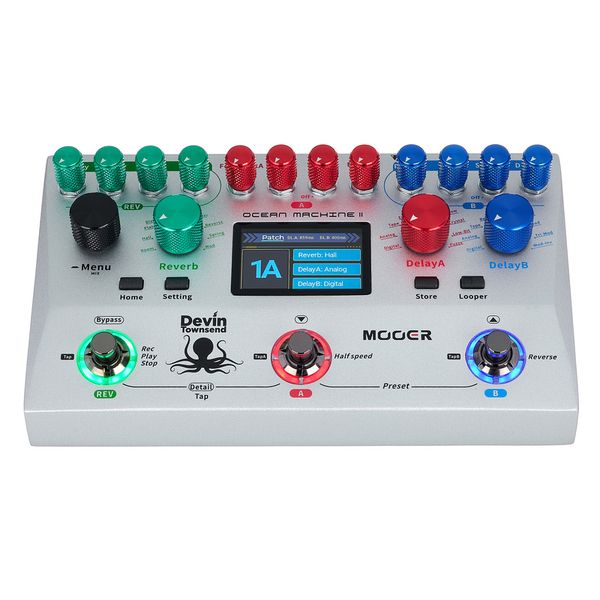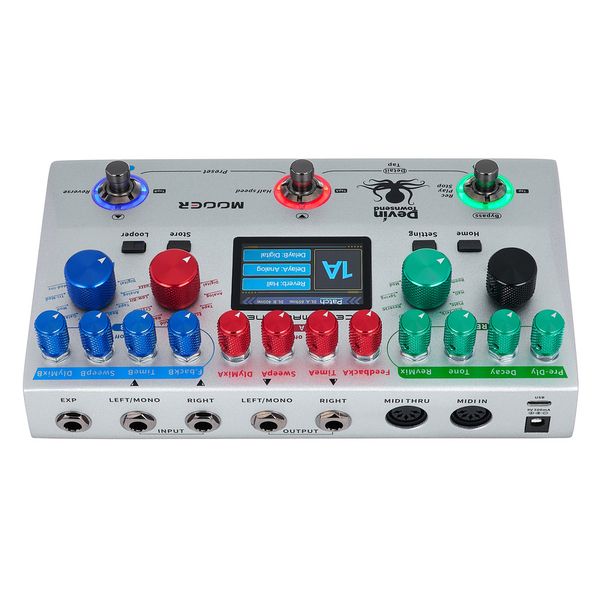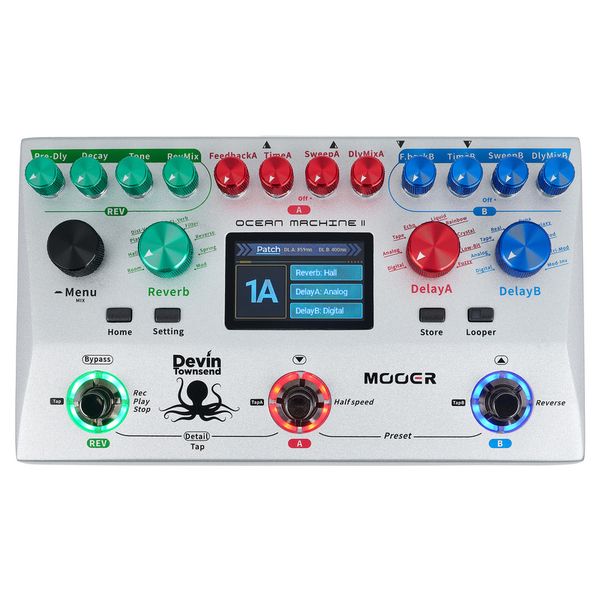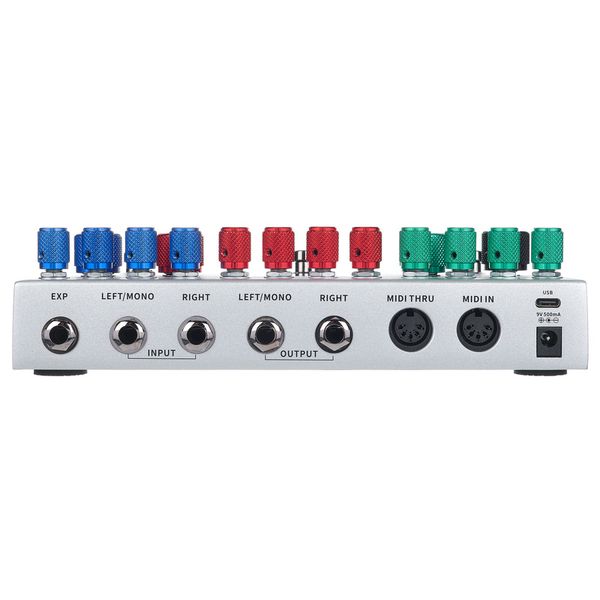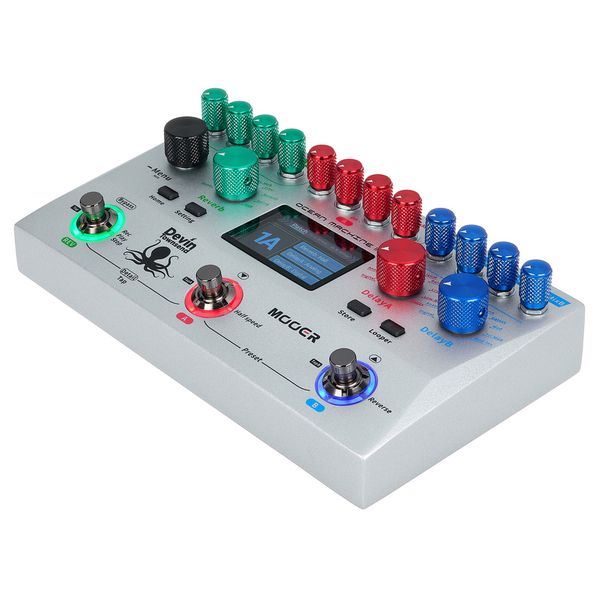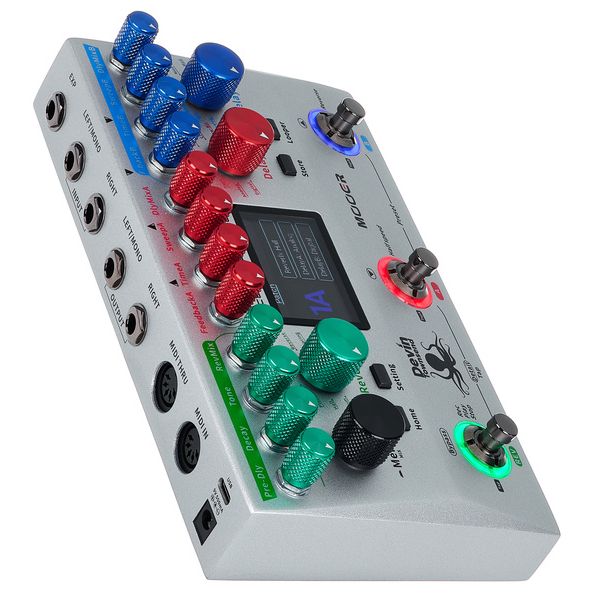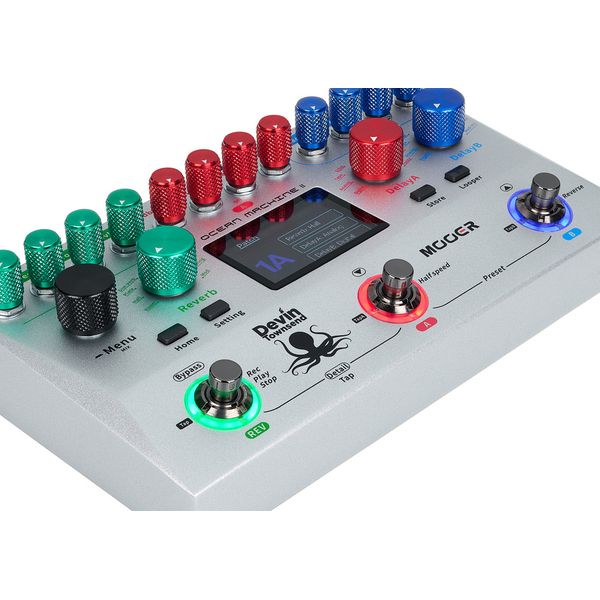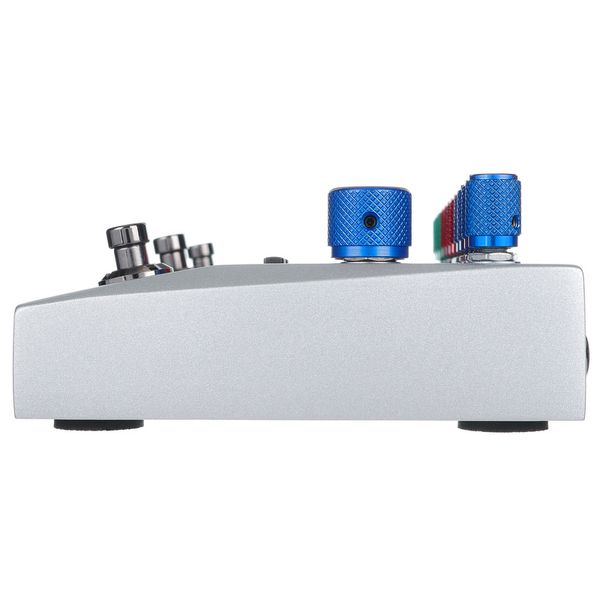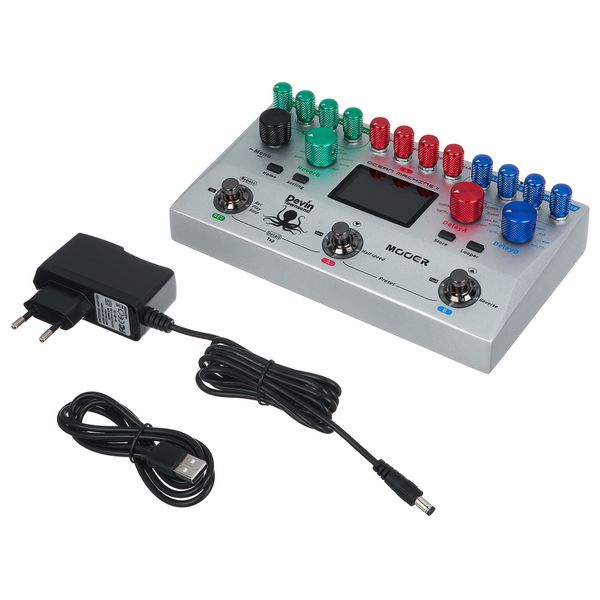The original Ocean Machine offered delays so long and reverbs so deep that the ocean felt as big as the sky. The Ocean Machine II brings them back, but with better control and quality overall.
With a quirky blue and white colour scheme the OG OM looked distinctive – if hard to read sometimes – but you could tell it wasn't quite finished, with sub-menus in the default "Roman" font used by Chinese OEMs and some features not quite how you'd expect.
Users weren't told how the bypass worked, so a lot of reviews said it lacked a true bypass even after firmware updates addressed the trails on/off control, and the stereo imaging wasn't quite as it should be. Both of these things have been fixed in the Ocean Machine II, the former by just making it really clear that the 'trails on' mode disables true bypass.
For anyone using the beat-driven delays and effects, the appearance of MIDI clock sync on the Ocean Machine II is extremely welcome. The original OM never got this promised feature – for a device that plays heavily on tempo and beat-division delays. This is the headline change introduced for the Ocean Machine II for most users, and it makes those five-pin DIN ports really useful as you can sync delays to your sequence AND add parameter changes as well. In a MIDI-driven studio the Ocean Machine II's potential really comes alive.
The physical hardware hasn't changed much. The familiar heavy, metal-cased box still has the weirdly flexible LCD screen protector (though the fonts and UI have been polished) and comprehensive array of knurled metal control knobs, but the layout has changed so Delay A and B read left to right, the coloured knobs make it easy to distinguish which effect you are modifying, and at long last, those MIDI ports can receive clock sync as well as a full set of CC controls for really dynamic effects in a studio or live environment (with the right hardware).
Weirdly, there's a USB-C port but it is only for firmware updates, not MIDI; the old OM received updates over MIDI and was notoriously fussy, sometimes being 'bricked' by incompatible MIDI hardware, but surely the USB could have been MIDI as well?
The choice to keep USB away from power supply and audio makes more sense though, since the Ocean Machine II is reassuringly free of digital noise, clicks and chirps often associated with DSP devices and USB power in particular.
Sounds-wise, the delay effects are the same roster, but with slightly softer, wider dynamic range and clarity. You can still find the brittle, shimmering harmonics and artefacts of some effects, but the reverbs are a little nicer, more realistic-feeling.
With a much longer looper (it also sounds better, to my ears, though I can't put my finger on why) the potential for a four-minute song over two repetitions is within reach. However, you have to remember that it doesn't have a memory for the recorded backing track – if you want to keep it, pop a little SD-card audio recorder inline with the outputs. Such a trick will also let you 'preload' your looper for future performances.
Few owners of the original complained about the sound quality, though – there really is very little on the market like this effects pedal, and what does compete on ability cannot come close on price.
There is a true bypass – there always was, but now the manual makes it clear that if you want DSP trails so effects don't suddenly cut off, the bypass is soft. The looper is longer - more twice the time of the original, at 120 seconds (two minutes!) - and still sounds great with intuitive control for overdubbing including 1/2 speed and reverse effects.
The C4 Air Switch of the original Ocean Machine doesn't appear to be compatible, you will want the new (smaller, metal) F4, but once again it seems the Looper can't be controlled remotely this way. It can be controlled with MIDI CC though, and there's a handy reference to all MIDI CC parameters in the unit's menus.
The new UI is easy to read with signal in/out clearly seen, and the black on silver front panel is also rather friendlier to eyes and challenging lighting environments (if less cool to look at).
In some ways it feels like the Ocean Machine II is what happens when your talented but chaotic friends grow up and get real jobs.
If you don't have any outboard effects, the Ocean Machine II is a great first-purchase to pair with synths or guitar/bass (I use mine as an external send-return on a DAW) – working with a simple synth such as the Behringer ProVS Mini, and the OM II looper, you can pretty much build a whole track up over two repetitions of that 120-second limit.
As an existing, and happy, Ocean Machine user upgrading, I would have liked to see C4 Air Switch support, looper via remote buttons. and USB MIDI. However, the updates to support MIDI clock, better stereo clarity, more stable and polished OS and longer looper times are enough to make the Ocean Machine II an upgrade worth paying for. I miss the funky blue design though!
Offering better value than before the Ocean Machine II comes with an appropriate power supply and also has a four-year warranty when registered.


